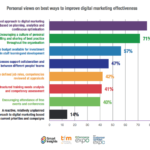When it comes to starting an online business, entrepreneurs are often faced with the daunting task of choosing the right business model. Two of the most popular options are dropshipping and wholesale, but many are unsure of the key differences between the two. In this article, we’ll delve into the world of e-commerce and explore the Great Divide between dropshipping and wholesale, helping you make an informed decision for your online venture.
Dropshipping vs. Wholesale: What’s the Difference?
Before we dive into the specifics, it’s essential to understand the fundamental difference between dropshipping and wholesale. In simple terms, dropshipping is a retail fulfillment method where a store does not keep the products it sells in stock. Instead, the store purchases the products from a third-party supplier, who then ships the products directly to the customer. On the other hand, wholesale is a business model where a retailer purchases products from a manufacturer or supplier in bulk, often at a discounted rate, and then resells them to customers.
Key Differences: Inventory Management
One of the most significant differences between dropshipping and wholesale is inventory management. In dropshipping, the supplier is responsible for storing and shipping the products, which means the retailer doesn’t have to worry about inventory management. This approach is ideal for entrepreneurs who don’t have the resources or space to store products. In contrast, wholesale requires the retailer to store and manage inventory, which can be a significant challenge, especially for new businesses.
Key Differences: Control Over Products
Another crucial difference is control over products. In dropshipping, the retailer has limited control over the products, as they are handled by the supplier. This can be a disadvantage, as the retailer has limited control over product quality, packaging, and shipping times. In wholesale, the retailer has complete control over the products, allowing them to inspect and test the products before reselling them to customers.
Key Differences: Profit Margins
Profit margins are another significant difference between dropshipping and wholesale. In dropshipping, the retailer typically makes a lower profit margin, as they are relying on the supplier to set the price. In wholesale, the retailer can negotiate the price with the supplier and set their own prices, allowing for higher profit margins.
Key Differences: Shipping and Fulfillment
Shipping and fulfillment are also key differences between dropshipping and wholesale. In dropshipping, the supplier is responsible for shipping and fulfilling orders, which can lead to delays and mistakes. In wholesale, the retailer is responsible for shipping and fulfilling orders, giving them more control over the process.
Key Differences: Minimum Order Quantities
Minimum order quantities (MOQs) are another significant difference between dropshipping and wholesale. In dropshipping, there are often no MOQs, as the retailer only needs to purchase a single unit. In wholesale, the retailer is typically required to purchase a minimum quantity of products, which can be a significant upfront investment.
Key Differences: Product Range and Customization
Product range and customization are also key differences between dropshipping and wholesale. In dropshipping, the retailer typically has limited control over the products, and may not be able to customize or personalize products. In wholesale, the retailer has more control over the products and can often negotiate custom orders or special requests.
Choosing the Right Business Model
So, which business model is right for you? The answer depends on your business goals, resources, and target market. If you’re looking for a low-risk, low-investment approach, dropshipping may be the way to go. However, if you’re looking for more control over products, higher profit margins, and the ability to customize products, wholesale may be the better option.
Conclusion
In conclusion, the Great Divide between dropshipping and wholesale is a significant one. Both business models have their advantages and disadvantages, and it’s essential to understand the key differences between the two before making a decision. By understanding the differences in inventory management, control over products, profit margins, shipping and fulfillment, minimum order quantities, and product range and customization, entrepreneurs can make an informed decision about which business model is right for their online venture.
FAQs
Q: What is the best business model for a new entrepreneur?
A: The best business model for a new entrepreneur depends on their resources, target market, and business goals. Dropshipping can be a low-risk, low-investment approach, while wholesale requires more upfront investment but offers more control over products.
Q: What are the benefits of dropshipping?
A: The benefits of dropshipping include low startup costs, minimal inventory risk, and the ability to test products without a significant upfront investment.
Q: What are the benefits of wholesale?
A: The benefits of wholesale include higher profit margins, more control over products, and the ability to customize or personalize products.
Q: Can I use both dropshipping and wholesale in my business?
A: Yes, many entrepreneurs use both dropshipping and wholesale in their business. For example, they may use dropshipping for fast-moving products and wholesale for slow-moving products.
Q: How do I find a reliable supplier for my wholesale business?
A: Finding a reliable supplier for your wholesale business requires research and due diligence. Look for suppliers with good reputations, competitive pricing, and reliable shipping and fulfillment. You can also ask for referrals from other businesses or attend industry trade shows to find potential suppliers.
Q: Can I negotiate prices with my supplier in a wholesale business?
A: Yes, negotiating prices with your supplier is a common practice in wholesale. Entrepreneurs can negotiate prices based on volume, frequency of orders, or other factors. However, be sure to read the fine print and understand any minimum order quantity or other requirements before negotiating prices.








